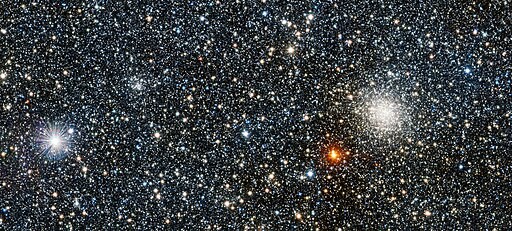A dim globular cluster called VVV CL002 is considered to be the closest to the center of the Milky Way galaxy at an approximate galactocentric distance of 1,300 light years. This cluster is also considered the closest to the supermassive black hole Sagittarius A*.

VVV CL002 is a relatively low-luminosity globular cluster discovered in 2011 using the VISTA Variables in the Via Lactea (VVV) survey. A recent investigation has revealed that this cluster is following a hazardous trajectory.
What is a Globular Cluster?
A globular cluster refers to a collection of tightly bound stars held together by mutual gravity. This vast collection can contain thousands and tens of thousands of extremely ancient and bright luminaries. Meanwhile, large ones can have millions of stars, which tend to be older and have lower metallicity.
The Milky Way galaxy is assumed to contain more than 200 globular clusters, possibly even more. Most of these clusters are found in the galaxy's halo of outer reach xx.
Astronomers perceive globular clusters as natural laboratories that enable them to study the evolution of stars and galaxies. In particular, they help better understand early-type galaxies' formation history and evolution. This is because globular clusters seem closely related to periods of intense star formation.
READ ALSO: Globular Clusters May Hold Clues About How This Galaxy Evolved, Researchers Say
Hazardous Journey
Using the Magellan Clay telescope in Chile, a team of experts performed near-infrared high-resolution spectroscopic observations of VVV CL002. A new study suggests that this globular cluster is falling towards the center of the Milky Way galaxy.
Led by Dante Minniti of the Andrés Bello Catholic University in Santiago, Chile, the researchers investigated how the globular cluster survived close to the galactic center without being disrupted tidally. They used the Warm Infrared Echelle Spectrograph at the Magellan Clay telescope to realize extreme dispersion and sensitivity (WINERED) to answer this mystery.
Their observations revealed that VVV CL002 has a retrograde orbital configuration of a relatively high eccentricity of 0.69. Inside the bulge, it has peri galactocentric and apo galactocentric distances of 619 and 3,400 light years, respectively. It turned out that VVV CL002 has an orbit hatch that is tighter than the orbits of all other globular clusters.
The study's findings provide significant insights into the chemical composition of VVV CL002. A metallicity level of -0.54 with high alpha-element abundance indicates that VVV CL002 is an old globular cluster formed with other clusters. This means it was formed at a relatively sizeable stellar birth radius outside the central region of the Milky Way but is now headed toward its galactic center—Minniti and his belief that this cluster will continue spiraling into the inner parsecs to be destroyed.
Globular clusters are known to be long-lived, but in hazardous areas such as the galactic center, their long-term survival is threatened. Dynamic friction in this region can eat away at the gravitational bond that holds the clusters together. Since powerful tidal forces dominate the center of the Milky Way, astronomers believe that globular clusters that get too close to it are torn apart, with their stars scattered into the general population of crowded stars.
RELATED ARTICLE: Hubble Space Telescope Finds Stunning Globular Cluster With Sparkling Stars Near Milky Way Galaxy [LOOK]
Check out more news and information on the Globular Cluster in Science Times.














